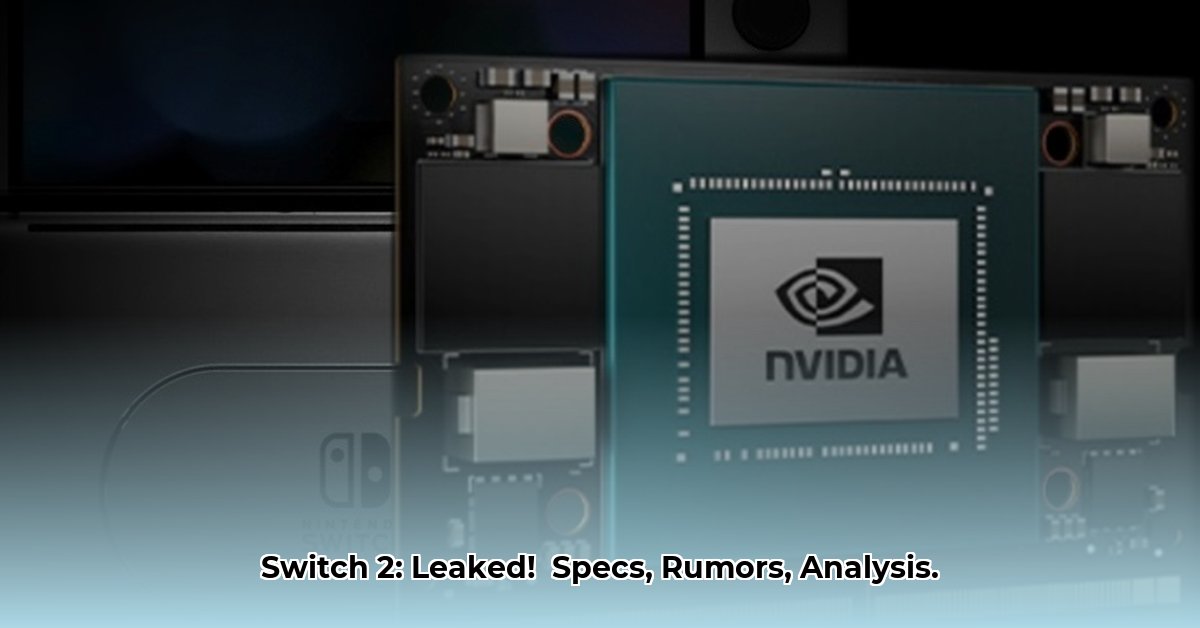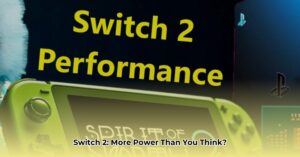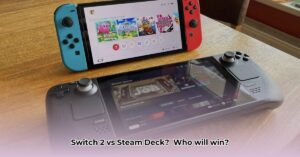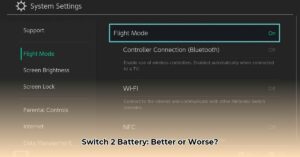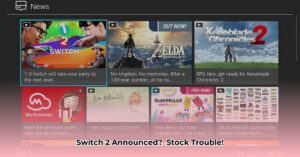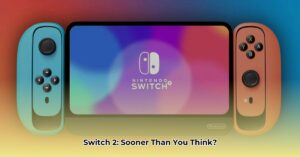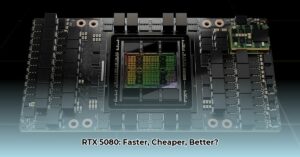Decoding the Switch 2 Rumors
The Nintendo Switch 2 is shrouded in secrecy, yet leaks and rumors provide a glimpse into what Nintendo might have in store. This article compiles credible information to paint a picture of the next-gen handheld’s potential specs, features, and performance. Remember, everything here is based on unofficial information and subject to change.
Unveiling the Potential Hardware
The Switch 2’s processor is likely a custom Nvidia T234/T239, potentially featuring ray tracing capabilities. This could bring realistic lighting and shadows to handheld gaming, significantly enhancing visuals. Paired with a rumored 12GB of LPDDR5 RAM, a substantial upgrade from the original Switch’s 4GB, the console should handle more complex games and multitasking with ease.
Storage is also likely to see a boost, with rumors suggesting 256GB of fast UFS 3.1 storage for quicker loading times. A more affordable 64GB eMMC option might also be available. The display is probably an 8-inch LCD with slimmer bezels, offering more screen real estate, though an OLED screen seems less likely at this stage.
Graphics and Performance: A Next-Gen Leap?
The Switch 2 might utilize DLSS upscaling, a technology that makes lower-resolution images appear sharper, potentially enabling 4K resolution when docked, albeit upscaled, running at a targeted 30fps. FSR support is also a possibility, further enhancing visual quality. This raises the question: will it truly be a “next-gen” upgrade, or a more refined current-gen experience?
Battery, Connections, and More
Improved battery life is almost a given, though the extent of the improvement remains unknown. HDMI 2.1 support is also rumored, ensuring compatibility with modern TVs and potentially enabling higher resolutions and refresh rates. This is a key factor for those who primarily play docked.
Rumored Specs at a Glance
| Component | Rumored Specification |
|---|---|
| Processor | Custom Nvidia T234/T239 with Ray Tracing |
| RAM | 12GB LPDDR5 |
| Storage | 256GB UFS 3.1 (64GB eMMC option possible) |
| Display | 8-inch LCD |
| Graphics | DLSS, Potential FSR support |
| Docked Performance | Targeted 4K/30fps (upscaled) |
| Other | Improved Battery, Possible HDMI 2.1 |
Deep Dive into Key Features
The Nvidia Tegra T239: Powering the Future?
The rumored T239 SoC, custom-designed by Nvidia, could be the driving force behind the Switch 2. A hybrid CPU architecture, featuring a mix of Cortex-X1, A78, and A55 cores, promises a balance of power and efficiency. The Ampere-based GPU, with its 1536 CUDA cores, combined with the potential of DLSS, suggests a significant graphical upgrade. However, the feasibility of ray tracing, given the handheld’s power constraints, remains a topic of debate.
Memory and Storage: A Significant Upgrade
The rumored 12GB of LPDDR5X RAM and 256GB of UFS 3.1 storage are substantial improvements over the original Switch. This could mean dramatically reduced loading times, smoother gameplay, and the ability to store more games. This addresses a major pain point of the current Switch, especially for digital-only gamers.
DLSS and Ray Tracing: A Generational Leap?
The inclusion of DLSS, specifically Ray Reconstruction, and potential ray tracing support are game-changers. DLSS could allow for higher resolutions and smoother performance, while ray tracing could bring realistic lighting and reflections to the handheld. However, the extent of ray tracing implementation, given the power limitations, is uncertain. Some analysts believe it may be limited to specific effects rather than full-scene ray tracing.
Backwards Compatibility: Bridging Generations
Backwards compatibility with existing Switch games is likely, allowing players to retain their libraries. This is a crucial factor for adoption and provides a seamless transition for current Switch owners. However, some developers are concerned that ensuring backwards compatibility might limit the Switch 2’s full potential.
The Switch 2 in the Handheld Landscape
The Switch 2 will enter a competitive market with rivals like the Steam Deck. Its potential power, improved screen, and extensive existing game library position it as a strong contender. The key differentiator will be Nintendo’s exclusive games and the unique hybrid console/handheld experience. The question remains: how will Nintendo balance power, performance, and battery life to create a truly next-gen handheld experience? Only time will tell. Stay tuned for updates as more information emerges.

